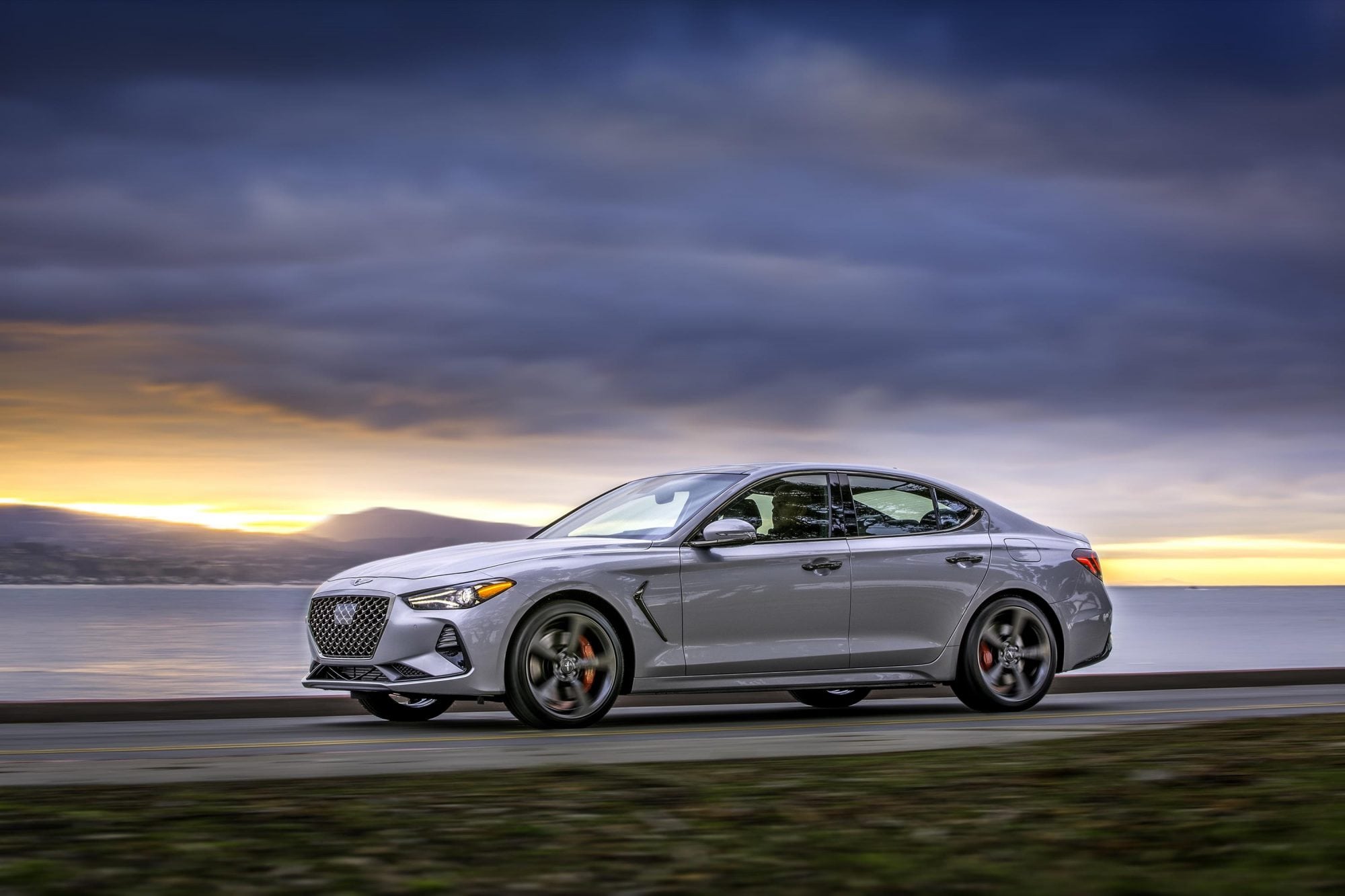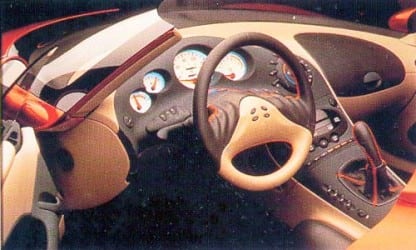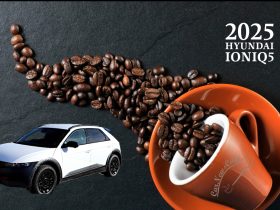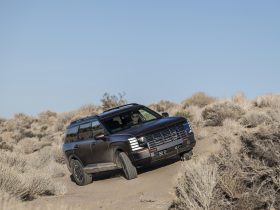The name Hyundai comes from the Korean word for “modernity.” Nothing expressed that more succinctly than the Hyundai HCD-1 concept in 1992, the concept car that kickstarted the South Korean brand’s name in the U.S. and that was the launching pad for the company’s rocket booster to becoming one of the most-recognized brand names in the world.
The Hyundai HCD-1 was a sleek, sinewy concept that commanded the Detroit Auto Show when it debuted and then proceeded to sachet onto magazine covers worldwide. It was a compelling, beautiful, and very sexy car and was the eyebrow-raising looker that made the company sexy enough for American buyers.
A Quick History of Hyundai and the HCD-1
Hyundai opened its doors in 1947 as a construction firm in South Korea, one of many that took advantage of the wartime and post-war rebuilding that was happening around the world. By 1965, they were operating internationally within several Asian nations. In 1967, a branch called the Hyundai Motor Company was founded. Until his death in 2001, the company and all of its subsidiaries were run by its founder, Chung Ju-yung. At that time, the company broke apart into several divisions, with the Hyundai Motor Company (now called Hyundai-Kia) being the current automotive branch and Hyundai Heavy Industries making up its commercial vehicles and transportation offing.
Before that breakup, when Hyundai was riding high as an international concern, the company was struggling to enter the American automotive market. In the 1980s, this market was ripe for newcomers as the Detroit giants were beginning to wane in dominance and the Japanese concerns, especially Toyota, were working hard to create and hold sway over the newly-emerging small car market that appeared during the oil crisis of the 1970s and the confusing vehicle efficiency standards that followed.
Failing to gain inroads, Hyundai reconsidered its tack and realized that it would need to be more American if it were to compete. In 1990, the company opened ts Hyundai California Design Center to develop North American-centric vehicle designs. First designs were the Tiburon coupe and Santa Fe 4×4. These were a solid start, but would not win the public’s attention. To gain that attention, Hyundai needed something flashy and ostentatious, but it still had to be in line with the company’s core principles if it were to succeed and not be anything more than an attention whore.
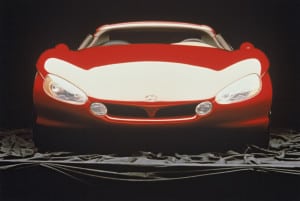 The California Design Center hit on that most American of ideals: a flashy red sports car. Their goal was to build a car that would be truly magazine-worthy, but that wouldn’t be seen as a knockoff of European or American sports car designs. They set to work on the HCD-1, the Hyundai California Design model 1.
The California Design Center hit on that most American of ideals: a flashy red sports car. Their goal was to build a car that would be truly magazine-worthy, but that wouldn’t be seen as a knockoff of European or American sports car designs. They set to work on the HCD-1, the Hyundai California Design model 1.
That naming convention was the first indication of what the trend-setting the new studio was about to begin.
The Design of the Hyundai HCD-1
The Hyundai HCD-1 unveiled at the North American International Auto Show in Detroit in 1992, where it wowed the crowds and immediately became the subject of magazine covers the world over. It was a huge success for Hyundai, doing exactly what the company needed to come out of nowhere and begin getting somewhere in the American auto market.
Many descriptions of the HCD-1 use the word “muscular.” This is a misnomer, since it wasn’t made as a fast car, but instead as a show car. The “muscle” term comes from the vehicle’s shape, which is better described, in my mind, as “sinewy.”
It’s a two-seater speedster with a strong stance and excellent proportions. Its long hood, large wheels (17-inches, big for the time) and voluptuous, sinewy body has a strong sex appeal.
The HCD-1 measured about thirteen feet long but only about forty inches high. Its relatively thin stance for that length, at just 68 inches wide, is made to appear bulkier due to its rolling fenders, tall wheels, and curvaceous nature.
The “muscular” description comes from the way the curves and lines seem to mimic the upper body of the human torso down to the hips. It’s freely shaped nature was what made it one of the most unique concepts to hit auto shows in a long time. Comparisons to Corvettes, Aston Martins, and others were inadequate and easily forgotten.
The removable targa roof and the fully-retractable rear window gave it an air of convertible feel while retaining the curve a rollbar would add to the overall look.
Under the Hood and Behind the Wheel
The powerplant for the Hyundai HCD-1 was disappointing, but since the car was only technically a rolling concept – it was meant to be looked at, not driven – the propulsion system was an afterthought. A standard, though sporty, 2.0-liter, 16-valve dual overhead cam (DOHC) fuel injected engine producing 150bhp was under that long, shapely hood.
Hyundai did take the chance to showcase some other cutting-edge equipment for the time, however, by installing things like anti-lock braking, dual airbags and an independent suspension system – all very advanced for 1992.
Inside, the car was wrapped in beautiful plastics and leather, with a light tan and dark brown color combination that was offset by bright sunset orange stitching to match the exterior paint. Instruments were laid on bright white “diamond” clusters with thin inlays of chrome for bezel work. A five-speed transmission finished off the inner workings.
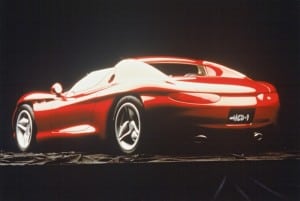 The car was said to be production-bound, though this was almost assuredly for hype reasons rather than reality. A price tag of $14,000 was given to the car, which immediately earned it more headlines, but most could see that a car like this, with a price point like that, was unrealistic. Had it been made, though, it would have been a great contender for the Mazda Miata that dominated the low-end sport roadster market at the time.
The car was said to be production-bound, though this was almost assuredly for hype reasons rather than reality. A price tag of $14,000 was given to the car, which immediately earned it more headlines, but most could see that a car like this, with a price point like that, was unrealistic. Had it been made, though, it would have been a great contender for the Mazda Miata that dominated the low-end sport roadster market at the time.
Where Is It Now?
The Hyundai HCD-1 is displayed by Hyundai in its automotive museums both here and globally with permanent residence being settled at the company’s South Korean headquarters. Rumor is that the engine and transmission were removed for shipping and the car is now a rolling sled only.
While the HCD-1 was never produced, its lines and look can still be seen today in Hyundai’s Genesis line of premium coupes.



